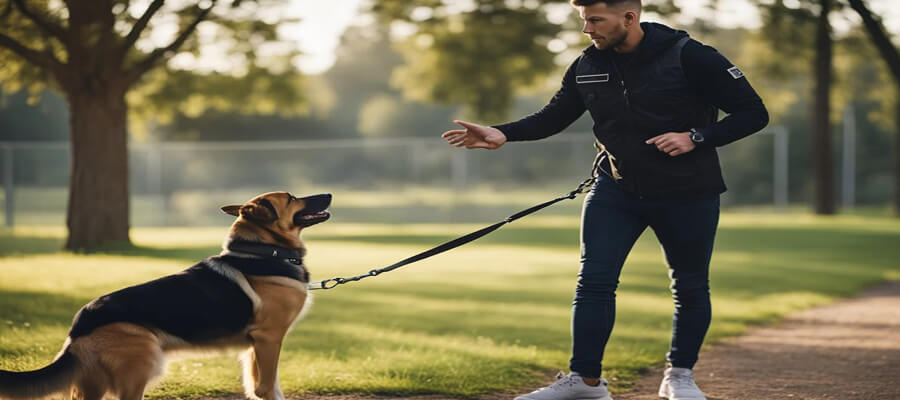
How to Manage a Dog with Aggressive Behavior
Manage a Dog with Aggressive Behavior
Introduction
Managing a dog with aggressive behavior can be a challenging experience for pet owners. Aggression in dogs can stem from various factors, including fear, territorial instincts, or lack of socialization. Understanding the underlying causes of aggression and implementing effective strategies can help create a safer environment for both your dog and those around them. In this guide, we will explore the causes of dog aggression, effective management techniques, and when to seek professional help.
1. Understanding Dog Aggression
A. Common Causes of Aggression
- Fear-Based Aggression: Many dogs become aggressive when they feel threatened. This fear may stem from past traumas, lack of socialization, or unfamiliar environments.
- Territorial Aggression: Dogs often exhibit aggression to protect their home, family, or resources (like food and toys). This behavior can manifest when someone enters their territory.
- Protective Aggression: Dogs may become aggressive if they perceive a threat to their owners or family members. This protective instinct can sometimes lead to overreactions.
- Frustration-Based Aggression: Sometimes, dogs may act aggressively when they are prevented from reaching a desired target, such as another dog or a person.
2. Recognizing the Signs of Aggression
Essentials for Your Newly Adopted Pet
Welcoming a shelter pet into your life is a beautiful journey. Here are some handpicked items to help your new friend feel safe, loved, and right at home:
Understanding the signs of aggression can help you identify potential triggers and take preventative measures. Some common signs include:
- Growling: A clear warning that your dog may be feeling threatened or uncomfortable.
- Snapping or Lunging: A more aggressive response, indicating a higher level of discomfort or fear.
- Baring Teeth: This is a serious warning sign and should not be ignored.
- Stiff Body Language: A tense posture can indicate that your dog is on high alert.
- Avoidance Behaviors: If your dog turns away or tries to escape, it may be feeling anxious or scared.
3. Effective Strategies for Managing Aggressive Behavior
A. Training and Socialization
- Positive Reinforcement Training: Use treats, praise, and toys to reward desired behaviors. This approach helps your dog associate positive experiences with specific situations or people.
- Socialization: Gradually expose your dog to new environments, people, and other animals. Start in a controlled setting, ensuring your dog feels safe and relaxed.
- Desensitization: If your dog reacts aggressively to specific triggers (like other dogs), work on desensitizing them to those triggers through gradual exposure at a distance, rewarding calm behavior.
B. Establishing Leadership and Boundaries
- Consistency: Be consistent with commands and rules. Dogs thrive in environments where they understand what is expected of them.
- Leadership: Establish yourself as a calm and assertive leader. This doesn’t mean being harsh or domineering; it means guiding your dog with confidence.
- Safe Space: Create a safe space for your dog where they can retreat when feeling overwhelmed. This can help reduce anxiety and aggression.
4. Management Techniques for Safety
A. Use of Leashes and Muzzles
- Leashes: Always use a strong leash during walks, especially in public spaces. This gives you control and helps prevent aggressive encounters.
- Muzzles: Consider using a muzzle if your dog has a history of aggression. Ensure it’s a comfortable, well-fitted muzzle that allows your dog to pant and drink water.
B. Avoiding Triggers
- Identify Triggers: Keep track of situations that provoke aggression in your dog. Once identified, try to avoid these triggers whenever possible.
- Controlled Exposure: When introducing your dog to potentially triggering situations, do so gradually and in controlled environments.
5. When to Seek Professional Help
If your dog’s aggressive behavior is severe or escalating, it’s crucial to consult with a professional dog trainer or behaviorist. They can provide tailored advice and training strategies to address your dog’s specific issues.
A. Behavioral Assessments
- Professional Evaluation: A certified dog trainer can assess your dog’s behavior and identify underlying issues that may be contributing to aggression.
- Customized Training Plans: Professionals can develop a training plan tailored to your dog’s needs, ensuring a systematic approach to managing aggression.
6. The Importance of Patience and Consistency
Managing a dog with aggressive behavior requires patience and consistency. Behavior modification can take time, so celebrate small victories along the way. It’s essential to remain calm and composed during training sessions and interactions with your dog.
Conclusion
Aggressive behavior in dogs can be concerning, but with understanding, patience, and the right strategies, it can be effectively managed. By recognizing the causes of aggression, implementing training techniques, and seeking professional help when necessary, you can create a safer environment for your dog and your family. Remember that each dog is unique, and what works for one may not work for another. Stay committed to your dog’s well-being, and you will see improvements over time.
Affiliate Products
We may earn a small commission when you shop through our links — it helps us keep sharing love and care for every dog out there, at no extra cost to you.
Up to 75% Discount

Dog Collar with Health Monitoring
BUY NOW »
Up to 55% Discount

Luxury Faux Furhuge Napping Bed
BUY NOW »

